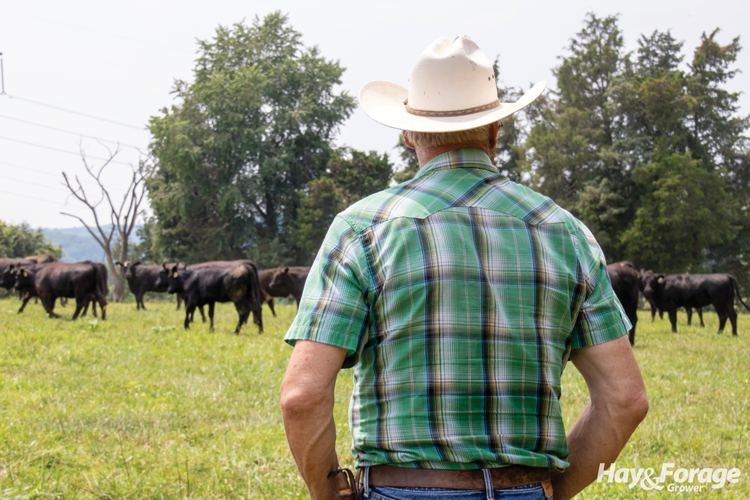
One of the tools I have used to assist my grazing management decisions is the pasture inventory. Like any other product inventory, a pasture inventory is a snapshot in time of what forage you have available for grazing on your farm or ranch. In productive environments, such as those with high natural rainfall or irrigated pastures, I like to do a pasture inventory every two weeks. On rangeland, I suggest a monthly inventory.
There are two basic ways to do a pasture inventory. The way I was first taught, back in the 1980s, was based on measuring dry matter yield in the pasture. The most accurate way to estimate yield is to clip a reasonable number of small sample areas, bag the clippings, weigh them, dry them, and then weigh them again. That is the way we did it in research trials.
The sample quadrats we clipped were 2.5 square feet. We cut five to 10 quadrats per sample area. Then we weighed and dried a lot of paper bags of grass clippings. It was tedious, expensive, and not nearly as accurate as we would have liked to believe. The whole process is fraught with opportunities for error. I don’t encourage anyone to actually do this process.
Over the years, we also developed methods of measuring height to estimate yield. Yes, there is a basic relationship that the taller the pasture is, the greater the yield is likely to be. This process led to the creation of the “sward stick.” Since any of these height by yield relationships have to be calibrated to clipping yields, more errors are compounded.
An easier way
The second way to do a pasture inventory is much simpler. It is based on visually estimating how much feed is available in the field. The unit of measure we use is animal-unit days per acre (AUD/A). The standard animal unit is a 1,000-pound animal at a moderate level of performance. If we use 2.6% of body weight as a standard measure of daily intake for moderate production, an animal-unit day is 26 pounds of dry matter of forage consumed. Take the total live weight and divide it by 1,000 to determine the number of animal units in the herd.
For example, if we have 100 cows weighing an average of 1,200 pounds, and they have 100 calves weighing an average of 300 pounds, we have a total herd weight of 150,000 pounds. Our herd consists of 150 animal units.
You might wonder how a visual estimate can be more accurate than clipping quadrats. Accuracy in visual estimation is based on calibrating your eye based on actual grazing events. You can train your eye to be most accurate if you are doing daily moves with your herds or flocks. You can be fairly accurate with up to weekly moves. Any longer grazing periods and your accuracy will be compromised by the variable recovery rate of the pasture being grazed. Here is how you train your eye to visualize forage availability.
Make repetitive estimates
We look at the pasture and estimate there are 50 AUD/A available. Available in the pasture means we can feed 50 animal units appropriately and leave an adequate amount of postgrazing residual standing in the paddock. We’ve already determined our herd consists of 150 animal units. Simple math says we should give them 3 acres for a one-day grazing period (150 AU divided by 50 AUD/A = 3 acres per day). Using a measuring wheel or a mapping app on our phone, we set up our polywire paddock to be exactly 3 acres.
We come back tomorrow at the same time of day and assess the results of our first daily allocation. If there are only 2 inches of grass left and we were expecting there to be 4 to 5 inches, we guessed too high. There was more likely only 30 AUD/A available, so now we set up our Day 2 allotment to be 5 acres (150 AU divided by 30 AUD/A = 5 acres per day).
Once again, we come back tomorrow at the same time of day. Now we find we have 6 to 7 inches of grass left in the pasture. Dropping our estimate down to 30 AUD/A was too great of a correction. On Day 3, we estimate there to be 40 AUD/A available so we set up a 3.75-acre paddock and check our results the next day.
If this process is repeated, soon we find our pregrazing estimate AUD/A and our corresponding paddock size are giving us the results we are looking for. Back in the 1970s, New Zealand researchers determined 30 repetitions of the process would create a grazier’s eye that was statistically as accurate as the best instruments we have available for measuring pasture yield.
Why is this process so accurate? Because it is completely based on what actually happened in the pasture.
This article appeared in the February 2024 issue of Hay & Forage Grower on page 20.
Not a subscriber? Click to get the print magazine.

